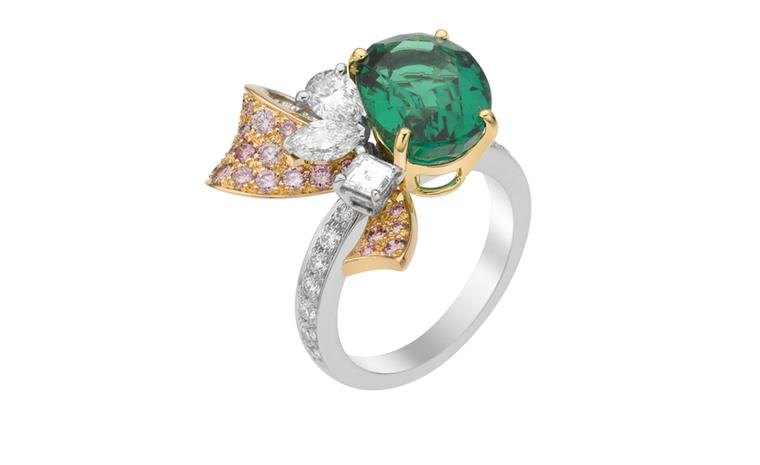
Balanchine's vibrant ballet "Jewels", inspired by Van Cleef & Arpels' 5th Avenue shop windows in New York, opened the Royal Opera House's new season. One of the most romantic liaisons in the world of art opened the Royal Opera House new season on the 20th September. George Balanchine's ballet 'Jewels' is inspired by the jewels of Van Cleef & Arpels considered to be the greatest work of this Russian choreographer. As well as being one of the first modern non-narrative ballets, the story behind this work is as romantic as a ballerina spinning on a jewellery box. At the start of the 1960's Balanchine, on his daily walk, used to pass in front of the Van Cleef & Arpels boutique on Fifth Avenue in New York. He was fascinated by the extraordinary beauty of the jewels. Subsequently, Balanchine became friends with Claude and Pierre Arpels and his growing appreciation of the art of the jeweller was the inspiration for his new ballet "Jewels" that had its debut on the 13 April 1963 with the New York City Ballet at the Lincoln Centre. Balanchine came to be one of the most influential choreographers of the 20th century and founder of the American Ballet But the story gets better. Inspired by Balanchine's work and the world of ballet, the Arpels brothers created more bejewelled ballerina brooches (the house first introduced them in the 1940's) that have since become one of the most recognisable motifs of the brand. With a sparkling single diamond for a head Van Cleef & Arpels' golden, slim-limbed ballerinas are clothed in diamonds and sumptuous gemstones. The romance between jewels and ballet takes another twist, when in 2007 Van Cleef & Arpels celebrate the first performance of 'Jewels' by the Royal Ballet with the high jewellery collection "Ballet Precieux". Like the acts of the ballet, there are three parts to the collection, each celebrating a gemstone, emeralds, rubies and diamonds. As expected, the collection featured new versions of the now famous ballerina brooches. Cascades of diamonds and emeralds recall the explosive beauty of a 'gran jetée' and a diamond necklace is whirl of light, like a tutu in full pirouette. The dancers never did wear Van Cleef & Arpels jewels - they would be too heavy to dance in - but the stage jewels sewn onto the costumes created by the ROH's 'Hat & Jewellery' department are faithful to the originals. The bejewelled costumes were designed by Barbara Karinska and reflect the characteristics of each stone as well as different styles of dance with long, classical skirts for 'Emeralds', saucy red miniskirts for 'Rubies' and fairy-tale white costumes for 'Diamonds'. But the final sprinkle of glitter on top of this most glamorous tale is the fact that Suzanne Farrell, one of Balanchine's greatest loves, was a lead dancer in the first production. A black and white photograph from 1976 taken in the Place Vendôme boutique captures the fairytale moment of Suzanne Farrell in her 'Diamond' tutu. She is graciously genuflecting to allow Balanchine, wearing a jaunty silk cravat and Pierre Arpels in a dark suit and tie to place a diamond tiara on her head. Unperturbed by the attentions, Farrell is lost in admiration of a pearl pendant and chain with the white price tag dangling from a black string.
















